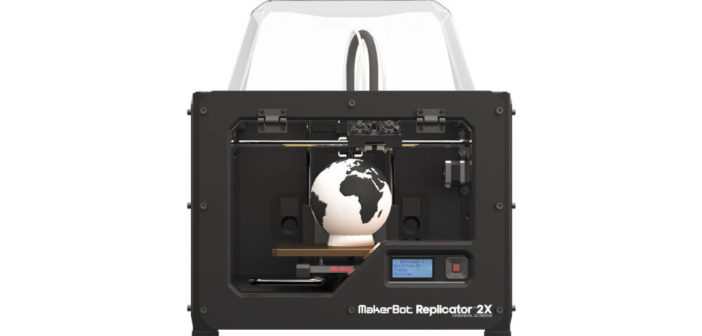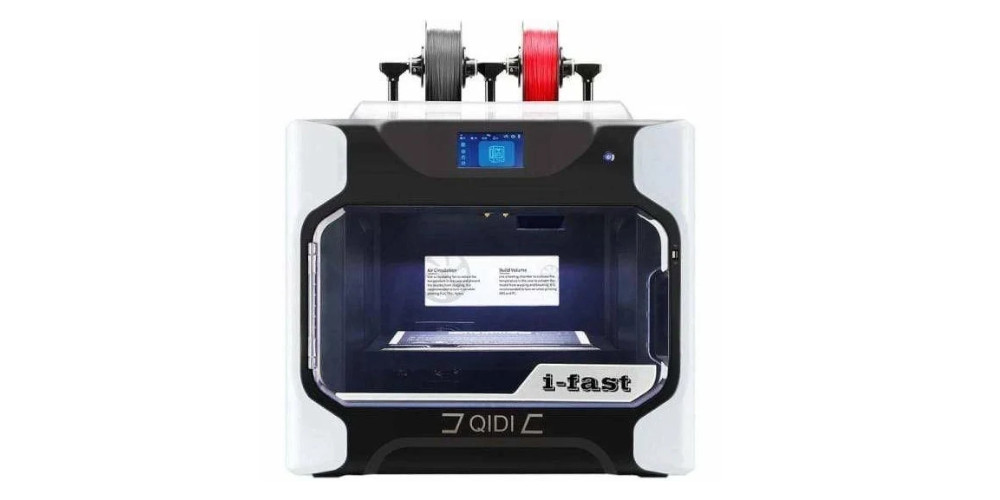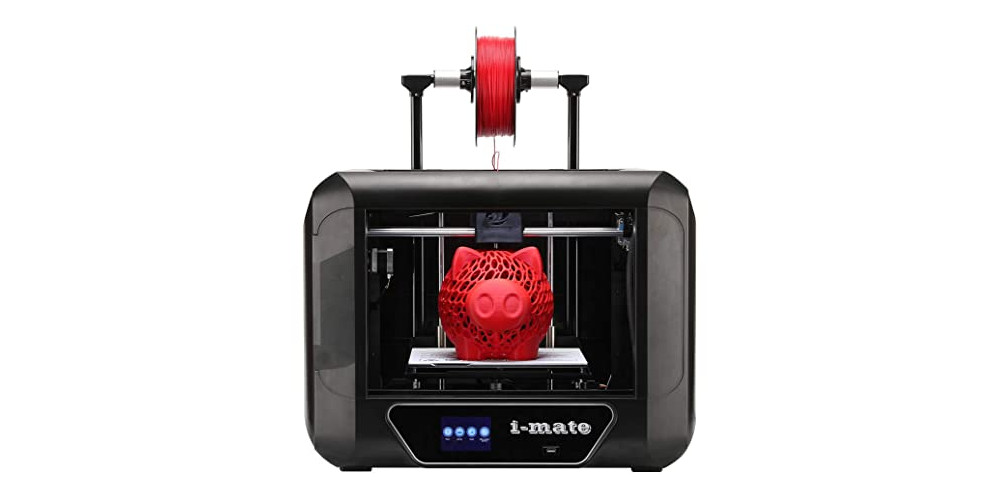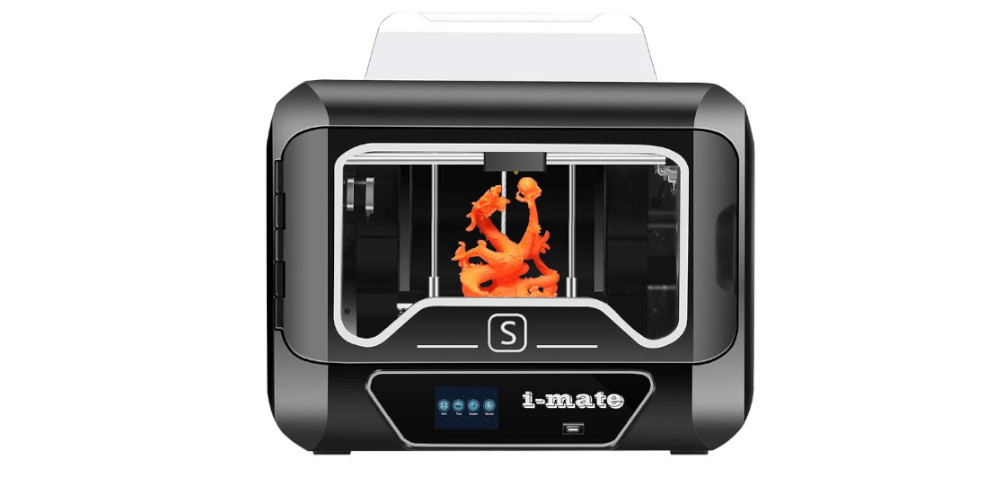MakerBot Replicator 2X Experimental 3D Printer Review Results
This printer's name should be your first indication that it's not intended for the faint-hearted. The Replicator 2X is a steel-framed, dual-extruding printer with plenty of potential, but it comes at a price. Is the cost of this machine justified by its results? We'll put the MakerBot Replicator 2X Experimental to the test in this review.
-
Printing Speed
-
Build Size
-
Precision
-
Value
-
Design
-
User Experience
MakerBot Replicator 2X Experimental 3D Printer Review Basics
At a glance, the Replicator 2X has some laudable specs. Its most obvious features are the .4mm dual-extruders which allow you to print in two colors at once. MakerBot recommends using only ABS and dissolvable filaments, but more on that later.
These extruders can move at lightning max speeds of 200mm/s around the 9.7 x 6.0 x 6.1-inch build space. That’s 350 total cubic inches and definitely one of the larger build spaces out there. It comes with a heated aluminum build plate that’s surprisingly dependable and heats up in minutes.
Print resolutions vary from 100-300 microns and result in good to exceptional prints that need little post production work. The steel frame is completely enclosed during a print, which also helps to keep print quality high.
MakerBot Replicator 2X Experimental 3D Printer Review Pros
Enclosed Printing Area
ABS produces flexible, highly durable prints, but it’s sensitive to temperature changes. It requires a heated printing bed to form a successful base, and benefits from an enclosed frame that helps keep a constant environment during the print. The Replicator 2X has both of these features, ensuring a smoother printing experience with ABS filaments.
Dual Extrusion
Dual extrusion is an undeniably cool feature that allows you to print with two colors or two filaments. In the case of the Replicator 2X, you can achieve sharp results with little-to-no color bleeding. In our experience, different colored filaments often print optimally at different temperature and resolution settings. When using two colors, don’t be surprised to find they don’t print best at the same settings.
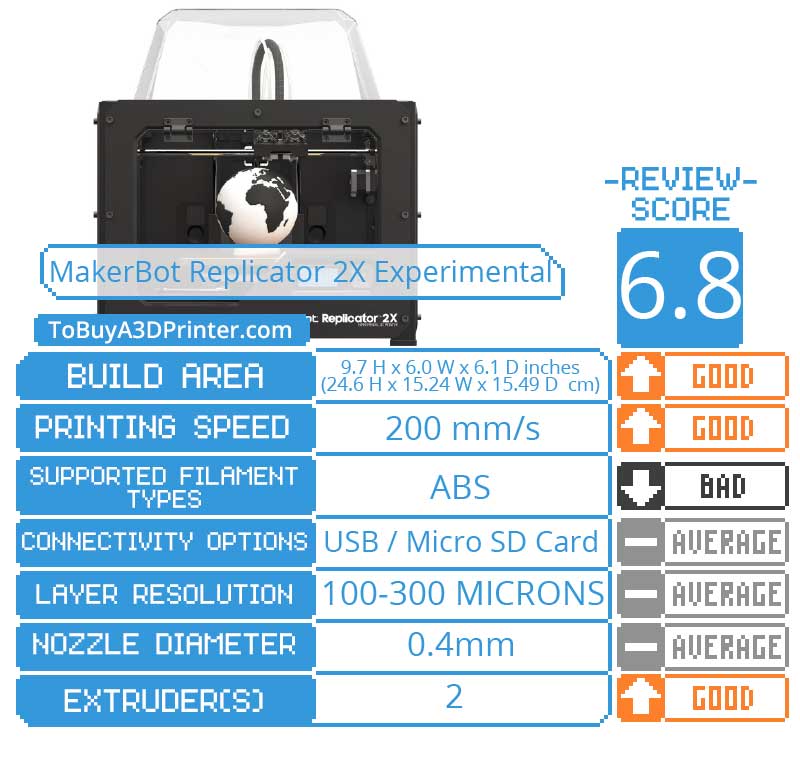
MakerBot Replicator 2X Experimental 3D Printer Review Cons
Limited Filament Options
The Replicator 2X can print in ABS and dissolvable filaments like HIPS. For some, this is all they need to make working parts, prototypes, and toys. PLA is not recommended by the manufacturers, but enterprising makers have been known to successfully print with this filament anyway. We can’t officially endorse this, but if you’re into experimentation (and you should be to buy this printer) it can prove to be a fun project.
High-Maintenance
Resounding feedback from beginner, expert, hobbyist, and professional makers alike says that this is a high-maintenance printer. To start, it lacks auto-leveling, and you can expect to re-calibrate after every few prints.
Despite being “optimized for ABS”, jams are also more frequent than we’d like, and fixing the problem is tedious. Additionally, many parts are known to fail, including motherboards, fans, and extruders. It does not come completely assembled, either, though most people will have this printer up and running in under an hour.
MakerBot Replicator 2X Experimental 3D Printer Review Verdict
The shame is that when it works, the Replicator 2X prints with high accuracy and can produce flawless dual-tone creations. Unfortunately, this printer gives many of its users trouble with even simple projects.
Things get even worse when you use both extruders, and since that’s the prime feature of this printer, that’s pretty disappointing. If you want a printer with 2 extruders, more versatility, and better reliability than the Replicator 2X, we recommend checking our reviews on the Airwolf 3D HD2X or the LulzBot Taz 6. These printers cost just as much but offer a much better user experience.

